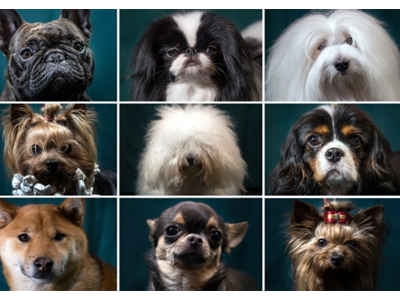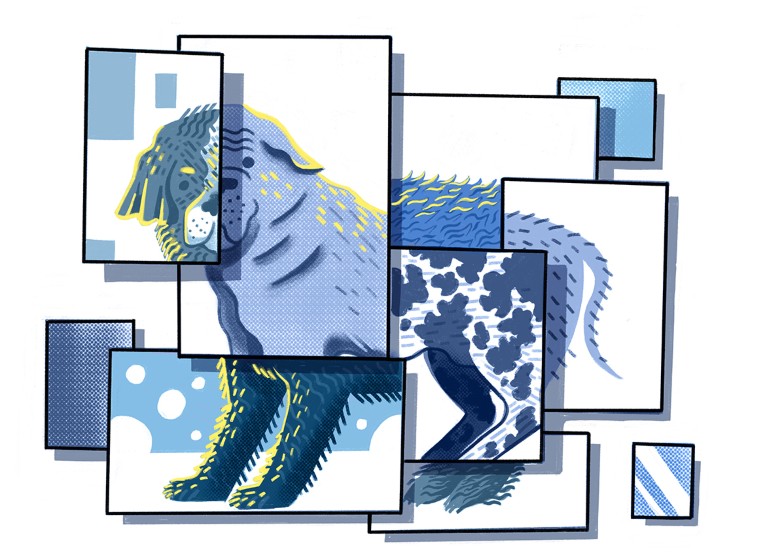The Invention of the Modern Dog: Breed and Blood in Victorian Britain Michael Worboys, Julie-Marie Strange & Neil Pemberton Johns Hopkins University Press (2018)
Charles Darwin, Charles Dickens and P. T. Barnum walk into a pub … a classic comic set-up that can only lead to one punch line: The Invention of the Modern Dog. This chronicle — by science historians Michael Worboys and Neil Pemberton and historian Julie-Marie Strange — charts the confluence of biology, class and popular entertainment that resulted in an unprecedented burst of nineteenth-century canine breeding. That tumult, they argue, stares out at us today from the eyes of our dogs.
Science and engineering were reshaping the British Isles, shrinking distances both geographical and social, even as Darwinian science effectively ‘shrank’ the distance between species. A newly minted middle class donned morning coat and top hat, and strode off to support the making of Empire. Vast numbers of people were ‘improved’ as their hard work finally paid off, and improved people needed improved dogs. Between 1874 and the beginning of the twentieth century, the number of dog breeds recognized in Britain swelled to include foreign breeds, variations of older ones such as the Welsh spaniel and the Skye terrier, and “manufactures”, such as the Yorkshire terrier. These dogs were whipped into must-have status through another Victorian invention: the dog show.
For the lucky and industrious, there was much to celebrate, and the money and time to do it. Over more than 270 pages, the authors document the dog show “mania” that swept across Britain from 1862. It is here that the new, improved dog took centre stage, for better or worse.
What’s bred in the bone: the dazzling traits of domesticated animals
The British aristocracy had always been keen on dogs: stud pedigrees remain as closely tracked and controlled as those of their masters. Canine valour was tested in the field and exalted in the arts. Meanwhile, the dog as entertainment had long been the domain of the ‘lower’ classes. Bull and bear baiting, popular in Elizabethan London, ended only in 1835, with the first Cruelty to Animals Act. Rat baiting remained a gambling sport in pubs until 1912. Aficionados of these ‘entertainments’ were known as “the Fancy”. Those who bred the fastest, toughest dogs could make a good living on wagers set by the thirsty new army of clerks and mid-level managers. For their wives, the new money bought servants, and empty time and laps were soon filled by miniature dogs such as the King Charles spaniel favoured by Queen Victoria (see Nature http://doi.org/gdthxg; 2018).
The Fancy scaled up its ‘sporting’ events and toy-dog beauty shows. The gentry, seeing this as entrepreneurial overstep threatening to dilute the purity of the British dogs’ pedigree, created the Kennel Club to set rules for the shows. Yet, despite its claimed dedication to improving breeds, the club never set breeding standards. Those were the preserve of local clubs devoted to a single breed, a newly emerged social stratum spanning the amateur–professional chasm.
Enter Darwin, Dickens and Barnum. Unnatural selection, social pretentions and showbiz set the tone for thousands of dog shows drawing Victorians of all classes (on separate days) to marvel at dogs that were changing before their eyes. With wolves extinct in Britain, animal baiting banned and game birds bred and delivered within shooting range, dogs no longer needed valour, courage and stamina. Freed to select for conformation alone, each club created an exacting standard for its breed’s appearance and assigned a numerical value to it.
There was little science to guide them. They did have Darwin’s warnings about the evils of inbreeding; and a Lamarckian belief in the heritability of acquired traits still lingered. The well-established practice of outbreeding periodically to improve performance was cast aside in favour of inbreeding to produce physical duplicates of the latest standard. ‘Best of show’ would go only to a black Newfoundland. The pug was shrunk from 14 kilograms to 10. Pointers grew larger. More toxic standards were set for the newly redundant bulldog. Selective breeding and surgical ‘face jobs’ produced extremely flat-faced dogs that were favoured in the show ring but were reportedly devoid of courage and aggression. George Roper, a leading figure in the Bulldog Club, lamented that the breed was “more liable to deterioration” than others.
The goal was improvement of the dog show, not the dog. Breed standards, based on fashion, were locked into place to make judging easier and competition fairer. The result was dog‑as-commodity.
The authors’ exhaustive documentation of these socio-economic forces supports their thesis that today’s dog is a deliberate invention of the Victorians. But, for all the research and reporting, they do not explain the emotional drive behind it. Why did the Victorians want this dizzying variety? What did all that messing about with dogs’ appearance do to the animals’ emotions and behaviour?
Thanks to Russian geneticists Dimitry Belyaev and Lyudmila Trut (as chronicled in Trut and Lee Dugatkin’s 2017 How to Tame a Fox (and Build a Dog)), we know that selecting for tame behaviour in wild foxes changes the animals’ look. The reverse should also hold: that selecting for coat and eye colour manipulates genes that affect behaviour. If such bundled temperamental effects were mentioned in the vast nineteenth-century breeding literature, it would have been fascinating and important to include them.
Dog family tree reveals hidden history of canine diversity
Given the profound sense of attachment on which the human–dog bond evolved, I would have expected that this bond — or the lack of it — would be an important factor in the Victorian explosion in breeding. We do learn that members of the Fancy were said to treat dogs better than their families; that toy dogs were bred to tolerate the excessive fawning of their mistresses; and that the shows’ popularity was “driven by the participants’ passion for dogs”. The only evidence of passion, however, appears in those (mainly women) who fought to abolish the shows because of abusive conditions (such as long hours, lack of water and worse). They also spoke out against breeding standards that led to gross deformities and diseases still with us. Cruel ear cropping was abolished in Britain in 1895, but the 2007 ban for tail docking still allows exemptions for working breeds such as spaniels, poodles and pointers.
To me, the greatest service offered by The Invention of the Modern Dog is to remind us not to breed dogs for conformation alone. We knew that 150 years ago. Take the Dalmatian, which owes its spots to a gene profile associated with a painful urinary disease. A simple outbreeding to an English pointer in 1973 left the breed with spots and good health. In 2011, 15 generations later, the American Kennel Club finally recognized it as a true Dalmatian.
We now have the genetic science and technology to make true improvements to the twenty-first-century dog. We can and we must use this knowledge to re-invent the Victorian canine into an animal bred for good health and temperament. I can’t wait to see what that dog looks like.


 What’s bred in the bone: the dazzling traits of domesticated animals
What’s bred in the bone: the dazzling traits of domesticated animals
 The long trek to domesticated bliss
The long trek to domesticated bliss
 Fowl domination
Fowl domination








